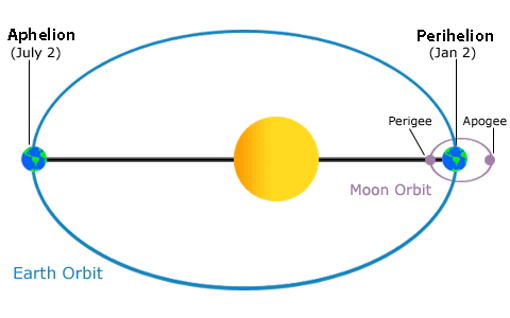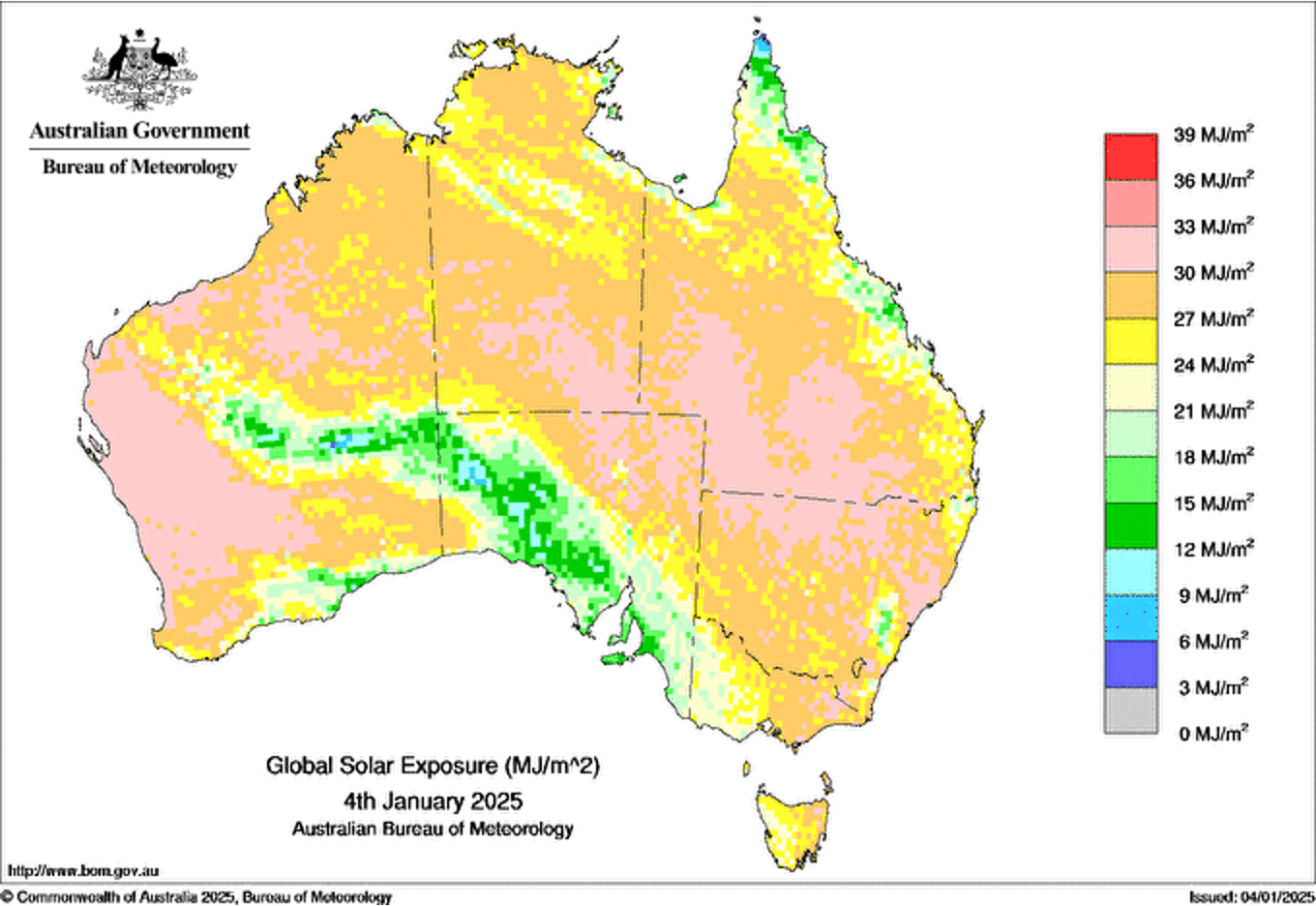News
‹ back to weather news
News
-
Earth has passed its closest point to the sun
Quincy Tut, 5 January 2025Our planet's elliptical orbit around the sun yields two occurrences per year in which we are closest and furthest from the sun. At 1:28pm on Saturday January 4th GMT (overnight in Australia), the earth was positioned at its closest point to the sun in its orbit.

Image: Earth has passed its closest point to the sun in its orbit. Source: NOAA
Known as the 'perihelion', the phenomena is consistently offset from the summer solstice by around 12-14 days each year currently, varying from January 2nd to January 5th. Historically, however, as far back as the 1500’s, both the perihelion and solstices occurred around mid-December, showing the drift in the timing of astronomical events and the imperfections in our calendar.
In contrast, the 'aphelion' is the point at which we are furthest from the sun, and will occur in 2025 on July 4th, Australian time.
The question from a weather point of view becomes: does this difference in distance actually make an impact on our temperatures?
To illustrate this with the best data available, we have taken all historical data from as early as the 1800's and collated a ranking of the hottest days of the year by capital city. Here's what we found:
- Adelaide Airport: The hottest day on average is January 10th. When it comes to the perihelion dates, the 2nd to 5th inclusive rank in the bottom 7 for the month, with maxima averaging about 27.2ºC.
- Melbourne Airport: The hottest day on average is January 20th. The 2nd to 5th inclusive are in the cooler portion of the month, with the 5th being the coldest at an average maximum of 24.6ºC.
- Canberra Airport: The hottest day on average is on January 26th. The 2nd to the 5th inclusive are again in the cooler portion of the month, with the 5th being close to the coldest with an average maximum of 28.5ºC.
- Sydney (Observatory Hill): January 25th takes the top spot for average maximum temperature. The 2nd to the 5th inclusive rank in the bottom third for average maximum temperature for the month, averaging about 26.3ºC.
- Hobart (Ellerslie Rd): Hobart's oldest continuous weather site is possibly the most representative of the lot. The hottest average day is January 20th, with 3 of the 4 perihelion dates falling in the bottom 5 for the month, averaging near 21ºC.
- Brisbane Airport: The hottest day on average is January 31st. 3 of the 4 perihelion dates are in the bottom 5 for the month, averaging about 28.5ºC.
- Perth Airport: February is the hottest month in Perth, with the hottest day on average falling on February 3rd. Nonetheless, 3 of the 4 perihelion dates in January are in the bottom 4 for the month, averaging about 31.3ºC.
- Darwin Airport: With January being a very middle of the pack ranking being in the wet season, the hottest historical day on average for Darwin is actually on November 15th. However, among the January days, the 2nd to 5th inclusive rank in the top 7 for the month, with maxima averaging about 32.2ºC.

Image: Solar exposure across Australia on January 4th, hours before the closest passing to our sun. Source: BoM.
With most centres having some of the coolest days for January on the perihelion, it is evident that the distance to the sun has minimal effect on the temperatures of the earth, despite the planet taking in about 7-8% more of the sun's energy during this time. The ability for the ocean to absorb and distribute heat, the tilt of the earth and its seasons, and atmospheric conditions such as cloud cover, wind and rain all have more drastic and short-term effects on our weather.
- Other news
- Mon 06 Jan 2025 Finally, some relief for emergency services in SA, Vic
- Mon 06 Jan 2025 Record-warm oceans surrounded Australia in 2024
- Sat 04 Jan 2025 Pipeline set to roar for the Da Hui Backdoor Shootout surf competition
- Fri 03 Jan 2025 Melbourne to have hottest weekend in 10 years as heatwave hits SE Australia
- Thu 02 Jan 2025 Australia registers 2nd warmest year on record

